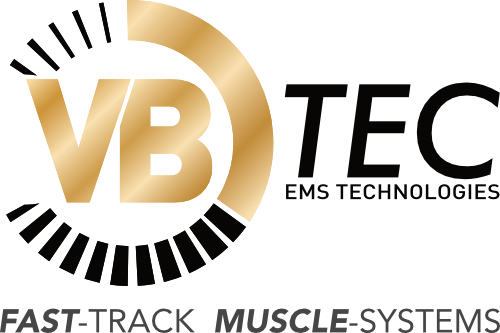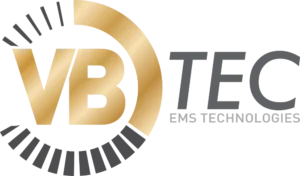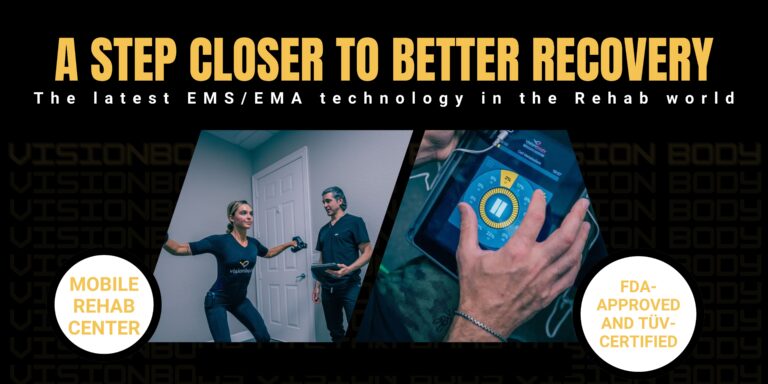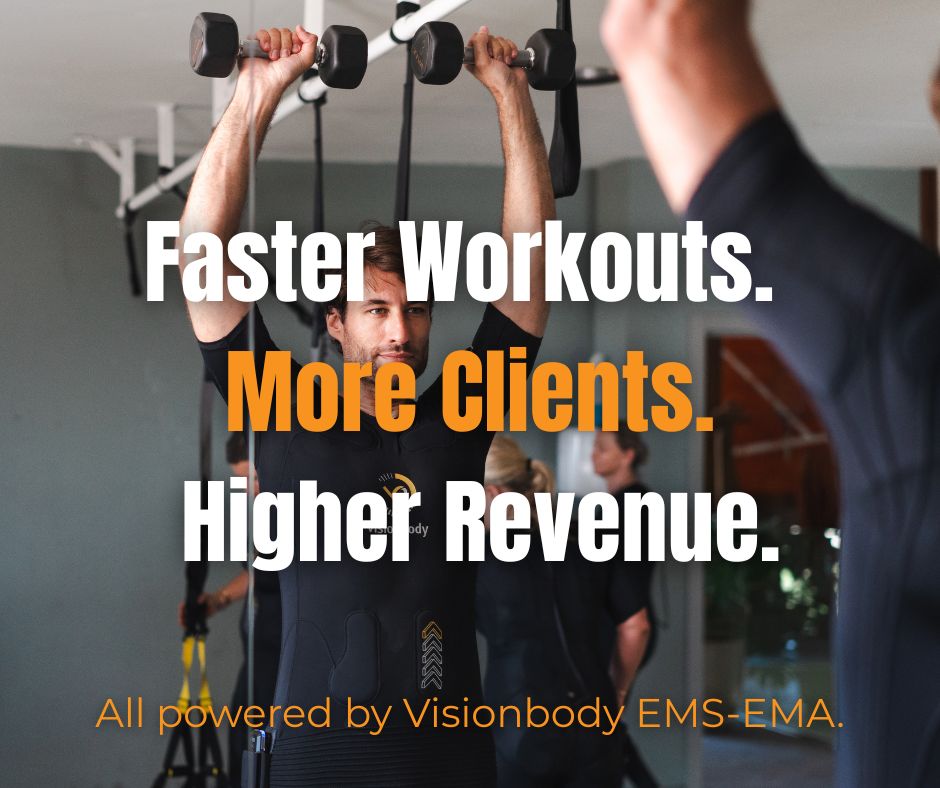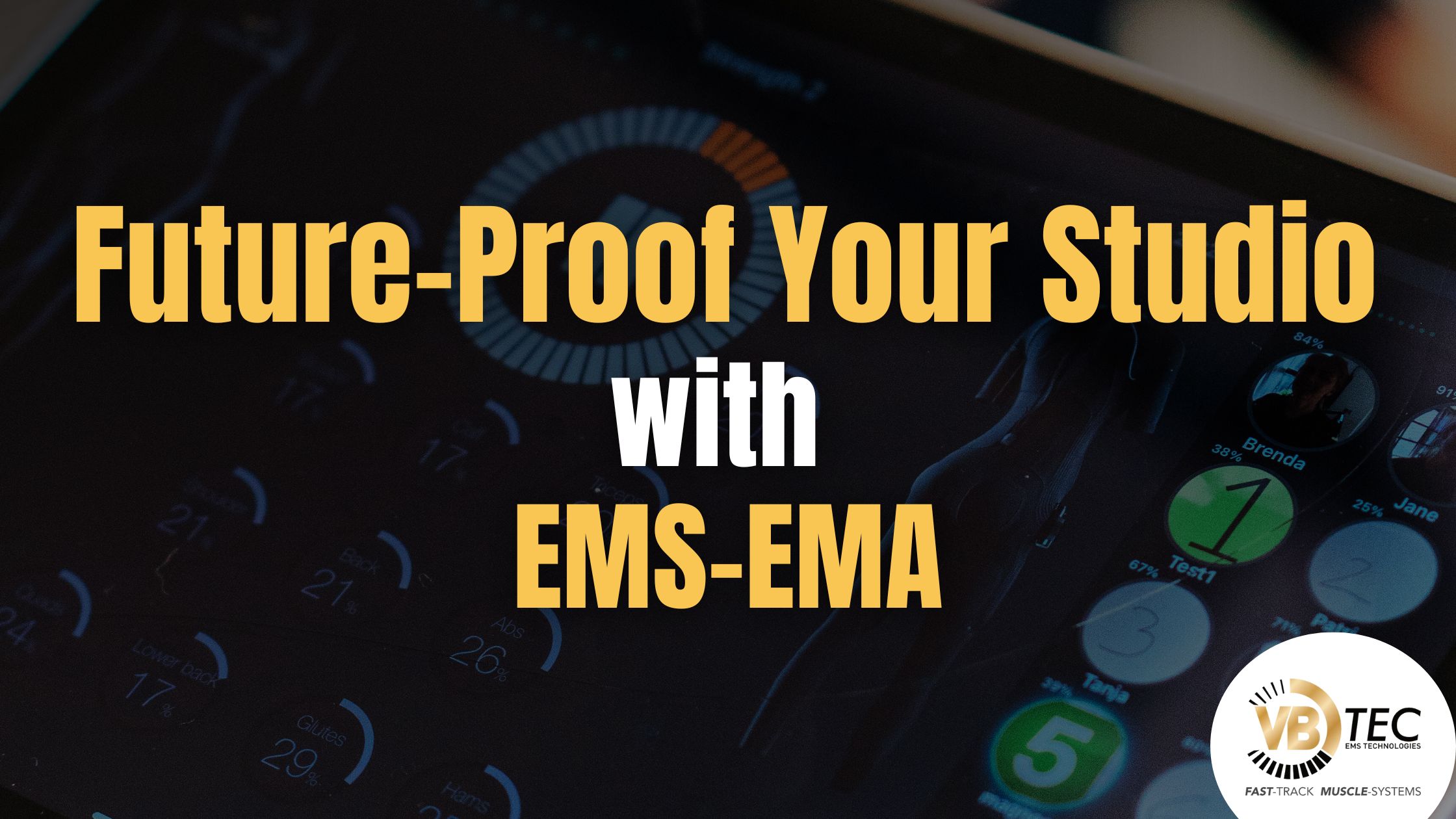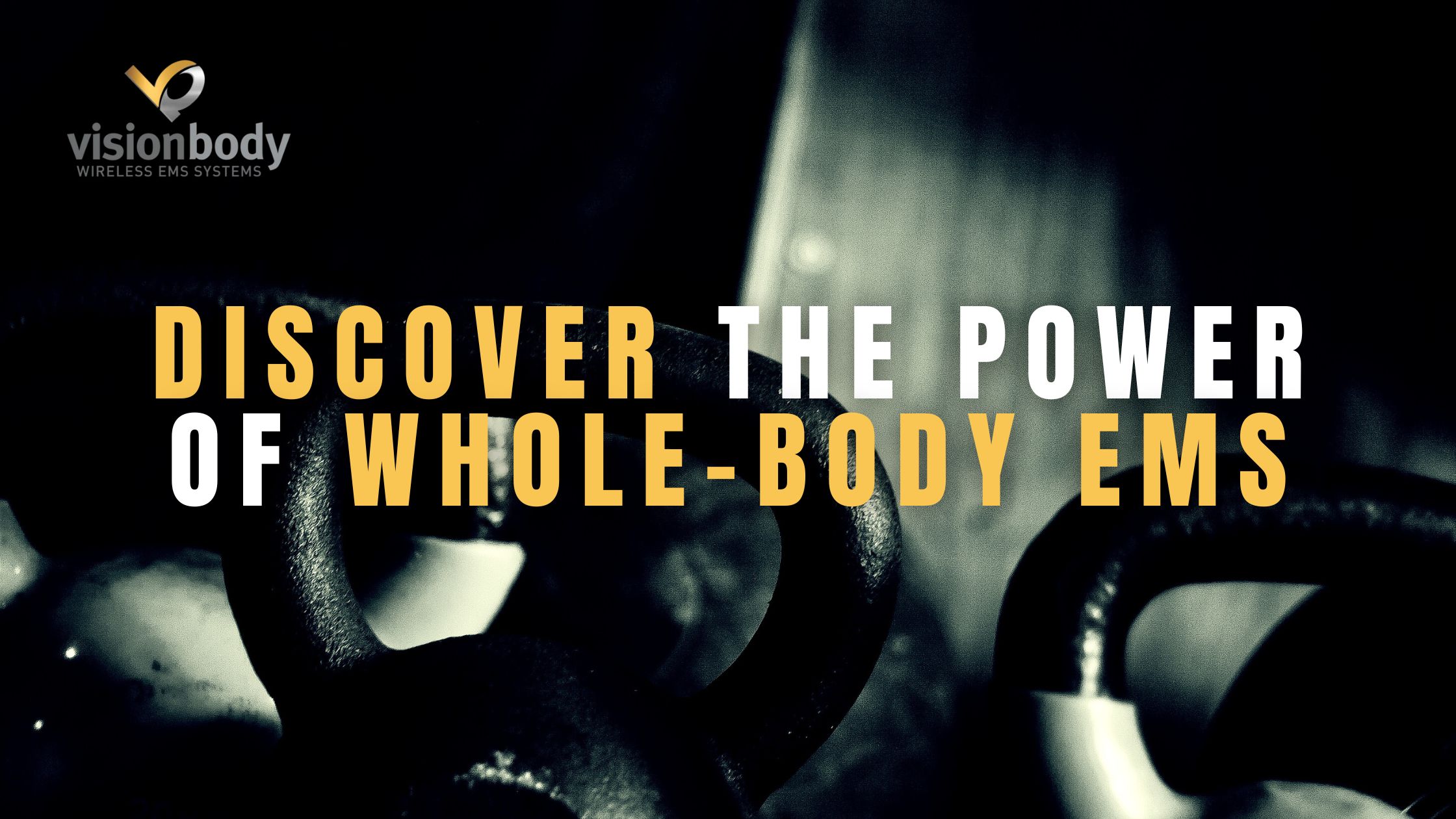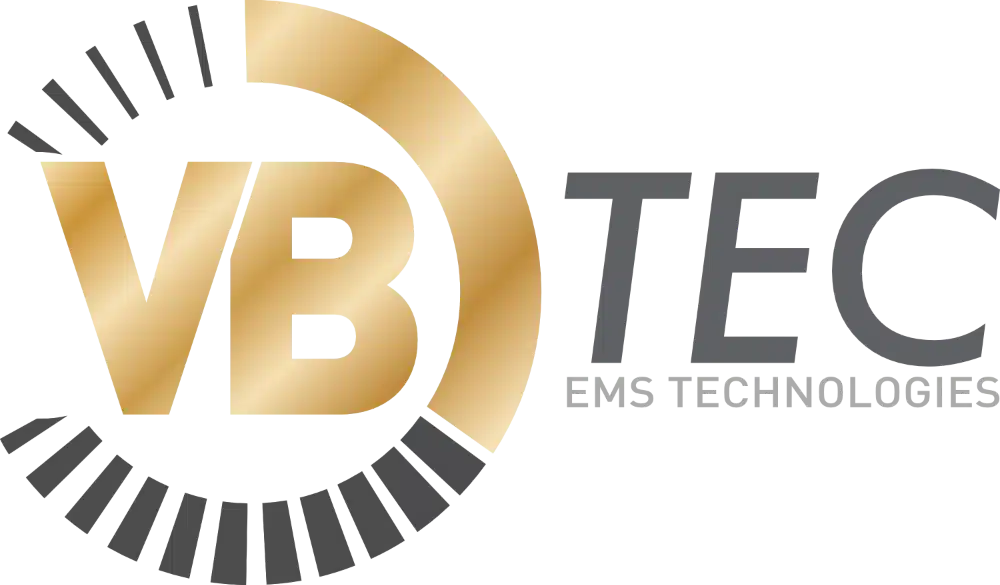By Henri Schmidt: Sports Scientist | CEO & Founder, VBTec (Visionbody)
Recovery is no longer a passive journey. In today’s fast-paced world, patients expect measurable results. Clinics are under pressure to deliver more in less time, and innovation is no longer optional; it’s expected. In this evolving landscape, EMS muscle training, powered by next-generation wearable technology, offers a game-changing opportunity for rehabilitation professionals.
Visionbody by VBTEC is redefining what muscle recovery can look like. By integrating EMS-EMA (Electrical Muscle Activation) into rehabilitation settings, clinics can support safer healing, faster functional gains, and greater operational efficiency. For forward-thinking physiotherapists, rehab specialists, and clinic owners, the question is no longer if to adopt EMS; it’s how fast.
What Is EMS Muscle Training? The Science Behind the Technology
Electrical Muscle Stimulation, or EMS, uses electrical impulses to trigger muscle contractions, mimicking the signals that naturally occur during physical activity. However, with wearable EMS systems, such as the Visionbody suit, this stimulation can be delivered while the patient is in motion or at rest, enabling targeted training without strain.
EMS was once viewed as a passive therapy limited to elite sports or neuromuscular re-education. But advancements in wearable tech and frequency modulation, like the EMS-EMA technology from VBTEC, have unlocked its active potential in dynamic rehab environments.
This modern form of EMS helps rebuild lost strength, reactivate inhibited muscle groups, and support neuromuscular control, without overloading the joints or fatiguing patients prematurely. Whether recovering from surgery, injury, or neurological events, EMS serves as a bridge between immobility and full function.
Why Traditional Rehab Needs an Upgrade
Rehab professionals understand that no two patients are alike. Unfortunately, time constraints, insurance limitations, and staff shortages often push clinics toward one-size-fits-all recovery protocols. This slows outcomes, frustrates therapists, and increases the likelihood of dropouts.
EMS training offers a customizable, data-backed intervention that fits seamlessly into nearly any rehab program. It is especially valuable when clients are too weak, in pain, or unmotivated to engage in traditional strengthening exercises. By activating muscles without resistance or impact, EMS provides a gentle but effective path forward.
More importantly, it gives therapists another tool in their arsenal to accelerate function, reduce reliance on pain medication, and restore independence faster.
Visionbody EMS: Redefining Modern Rehabilitation
In the world of rehabilitation and recovery, Visionbody stands as a true pioneer, combining over 35 years of scientific innovation with unmatched usability and effectiveness. As the world’s first fully wireless EMS-EMA system, Visionbody has eliminated the wires, gels, and discomfort of traditional setups, paving the way for a more hygienic, mobile, and intelligent muscle training experience.
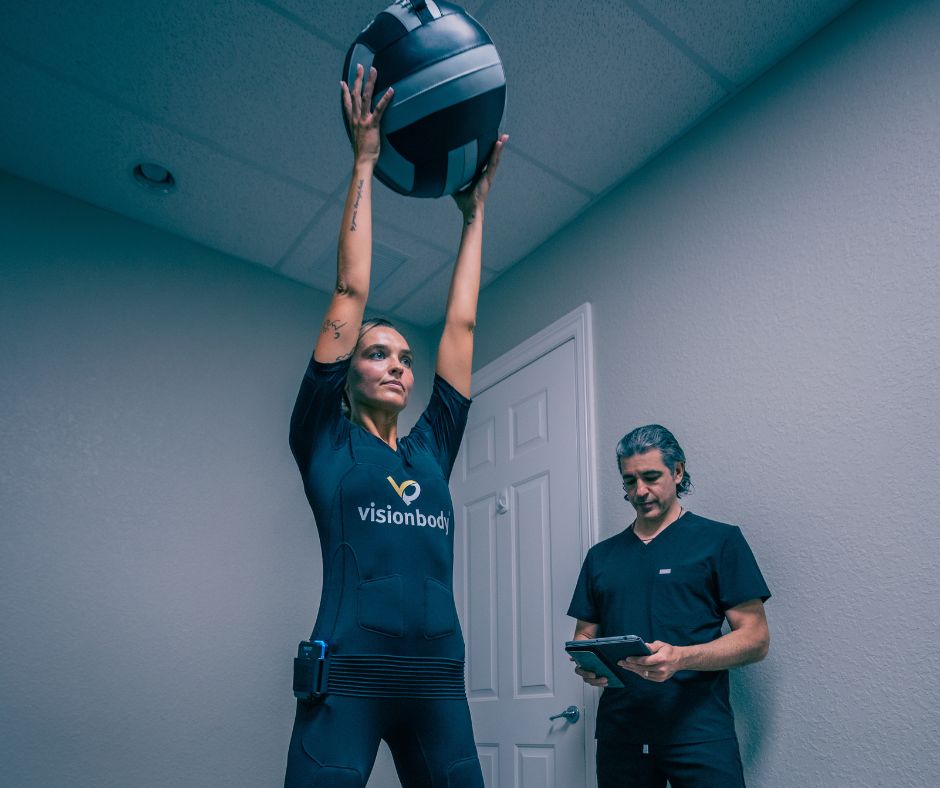
At the heart of this system is the Combinaison Visionbody PowerSuit, engineered in Germany using advanced antibacterial textiles and seamlessly integrated dry electrodes. This suit activates up to 98% of your muscles in a single session, reaching both fast and slow-twitch fibers through deep-penetrating low and mid-frequency impulses. Whether you’re restoring motor control, increasing joint stability, or accelerating post-surgical healing, the VisionBody PowerSuit allows for real-time functional movement during treatment, helping patients build strength and mobility without strain.
The suit pairs wirelessly with the Visionbody PowerBox, a compact, lightweight device that controls contraction depth, rhythm, and intensity. Trainers and therapists can fine-tune every session using the dedicated VB iPad, which pairs seamlessly with the Visionbody App. This intuitive interface transforms the iPad into a powerful rehab and training command center, offering real-time control over muscle activation and access to a wide range of programs, from muscle building and cardio to circulation support and relaxation.
FDA- and TÜV-certified, Visionbody delivers clinical-grade safety and precision, making it ideal for physiotherapists, recovery centers, and orthopedic clinics. And it’s not just smart; it’s efficient. In just 20 minutes, patients can experience results that normally require hours of conventional therapy. The EMS-EMA system even supports bone density stimulation, essential for aging clients and those with mobility issues.
But what truly sets Corps de vision apart is its EMA (Electric Muscle Activation) technology, a breakthrough that intelligently mimics the body’s natural movement patterns for deeper, more sustainable recovery. Instead of static rehab routines, clients engage in dynamic, full-body sessions that support muscle symmetry, circulation, coordination, and faster regeneration.
Corps de vision isn’t just a product, it’s a performance lab. A tool for biohackers, professionals, and clinics that demand measurable results. Whether you’re helping clients recover range of motion or reduce muscular imbalances, Visionbody empowers you to deliver smarter, safer, and significantly faster rehab outcomes; no wires attached.
Clinical Outcomes: EMS That Works With the Body, Not Against It
Clinicians and researchers alike have confirmed that EMS supports faster muscle regrowth, improved balance, and better neuromuscular control. Unlike passive modalities that reduce inflammation or mask pain, EMS actively works with the body’s natural healing processes.
For post-surgical patients, it limits muscle wasting during periods of immobility. For athletes or younger clients, it restores symmetry and strength following joint injuries. For older adults, EMS can improve posture and reduce fall risk by strengthening underused stabilizing muscles.
These outcomes aren’t just beneficial for the patient, they’re essential for the business. Faster recovery means:
- Fewer canceled appointments
- Higher patient satisfaction
- More efficient use of staff time
- Better word-of-mouth and long-term loyalty
The science is there. But the true value of EMS in rehab lies in its real-world impact, faster discharges, safer progressions, and happier clients.
Common Barriers in Rehab and How EMS Solves Them
Lack of Engagement
Many patients lose motivation during the slow phases of rehab. EMS creates immediate muscle engagement, giving clients visible and physical results, even during early-stage recovery when exercises feel dull or uncomfortable.
Limited Time Per Session
With healthcare systems stretched thin, therapists are tasked with achieving more in less time. EMS compresses the work of a 60-minute strengthening session into just 20 efficient minutes, allowing therapists to manage more clients without sacrificing care quality.
Incomplete Recovery
Clients often leave rehab with lingering weaknesses or compensatory movement patterns. EMS allows therapists to pinpoint and activate specific muscle groups, ensuring a more complete and balanced recovery process.
Fear of Pain or Re-injury
Traditional exercises may intimidate post-op patients or older adults. EMS stimulates muscles without stressing the joints or spine, enabling confidence-building recovery for even the most hesitant clients.
Smart Integration Into Your Rehab Protocols
EMS is not meant to replace manual therapy, functional movement, or neuroplasticity work; it’s meant to amplify them. With the Visionbody EMS suit, therapists can maintain full creative control over treatment plans, integrating EMS into:
- Active-assisted movement routines
- Postural and balance training
- Strength reconditioning and re-education
- Pain-free range-of-motion exercises
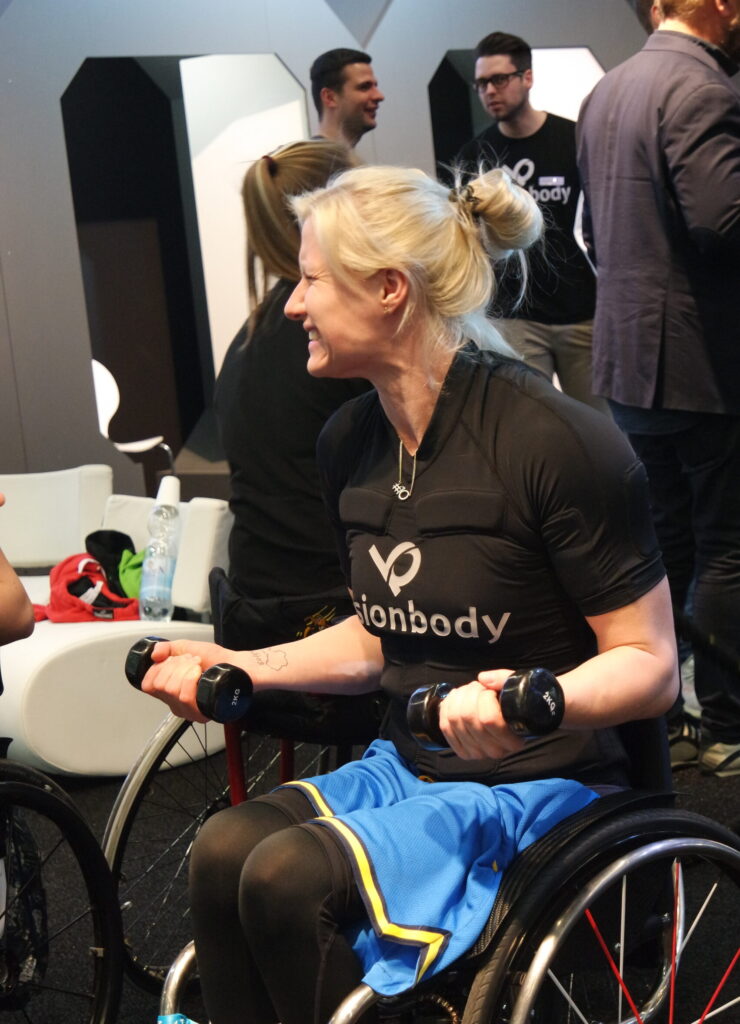
The system is easy to learn and requires minimal training, making it a fast addition to your daily clinical workflow. For multi-practitioner clinics, this also reduces variability in patient outcomes, as EMS can provide standardized stimulation protocols across therapists.
EMS can also be used in group settings, creating efficient rehab classes or hybrid wellness sessions that combine coaching with recovery support. This opens up new business models, from injury prevention programs to functional longevity services.
From Reactive to Proactive Recovery
One of the most exciting applications of EMS is in preventative care and performance longevity. Rehab doesn’t have to start with an injury; it can be a part of long-term movement health.
For aging populations, sedentary clients, or postnatal women, wearable EMS suits like Visionbody can support:
- Functional strength maintenance
- Pelvic floor rehabilitation
- Fall prevention programs
- Chronic back or joint pain reduction
By shifting from reactive care to proactive strengthening, EMS helps clinics deliver value beyond injury recovery, building loyalty and trust through wellness-focused care.
Scalable, Efficient, and Future-Ready
As the demand for rehab services grows and insurance reimbursements shrink, clinics must evolve. EMS is one of the few technologies that can scale your care without scaling your costs.
Avec Corps de vision, you’re not investing in a gimmick. You’re choosing a system that:
- Works across populations and conditions
- Increases appointment efficiency
- Requires no extra space or equipment
- Enhances your brand’s perception as an innovation leader
Clients will remember your clinic as the one that offered them faster results, less pain, and smarter recovery.
Rehab That Moves With the Future
Rehabilitation is no longer just about healing injuries; it’s about restoring lives, maintaining function, and improving long-term well-being. Visionbody by VBTEC empowers you to lead that change by integrating intelligent, wearable EMS into your daily workflow.
You don’t have to choose between care quality and business performance. With EMS, you can have both.
Take the Next Step Toward Rehab Innovation
Bring EMS-powered recovery to your practice.
Reach out to Visionbody by VBTEC to explore how wearable EMS can enhance your outcomes, streamline your workflows, and future-proof your services.
Contactez-nous dès aujourd'hui and discover how to transform your rehab business with smarter, faster, and safer recovery solutions.
References:
- Kemmler, W. & von Stengel, S. (2013). Impact of Whole-Body EMS on Aging Populations.
- Paillard, T. (2008). EMG and Neuromuscular Response to Electrical Stimulation.
- Lake, D. A. (1992). Neuromuscular Electrical Stimulation Overview.
- Filipovic, A. et al. (2012). Meta-Analysis on the Efficacy of EMS Training.
- Gondin, J. et al. (2011). Neuro-Muscular Adaptation to EMS Training in Clinical Settings.
